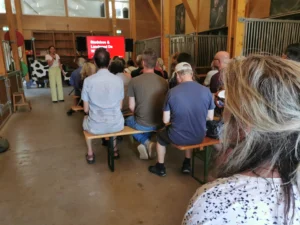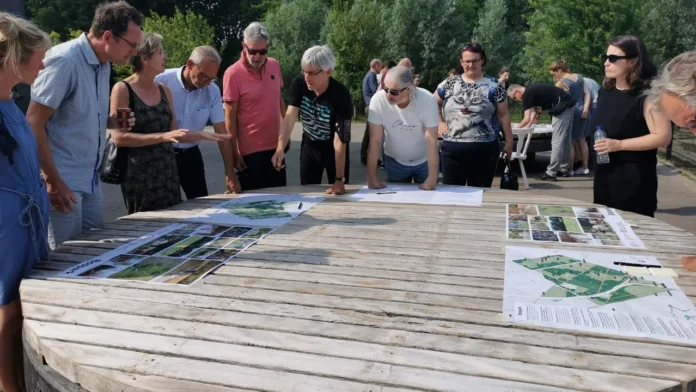Eindhoven presented its plans for the City Forest in a remarkable setting on Thursday. Between the goats, rabbits, and guinea pigs of the petting zoo in Philips van Lenneppark, three scenarios were presented to the audience. The Estate de Wielewaal is a part of this plan.
Landscape architecture firm Zus explained to the audience the different plans for the urban forest: for example, the forest park is one of the possibilities. The recreational function of the urban forest takes centre stage in this plan. The other variant highlights the different landscapes in the area and finally, there is an eco-variant. Here the focus is mainly on creating good and wholesome nature in the urban forest.
“The forest park is an estate with two faces,” landscape architecture firm Zus said at the presentation. “The park areas can be used intensively. There can be recreation and small-scale activities. The other area is used for nature development and ecology, which are less accessible to the public.”
Estates
“In the Iconic Estates scenario, all the different landscapes are enhanced by their own characteristics and their histories,” the landscape architect explains. “Estates can also be enclosed. The trails through the park run around the landscapes and can be closed individually. If one part closes, other parts of the urban forest can remain accessible.”

Ecopark
“The plans for the eco-park focus on strengthening biodiversity and nature, focusing on nature education, small-scale nature recreation, and establishing food forests. There will be areas that really remain completely closed for the benefit of nature.”
There is no need to make a hard choice between the three scenarios, by the way, the architectural firm emphasises. “We would like to bring together the positive points of all these scenarios,” the architectural firm reveals.
General requirements
However, there are standards provided by the city council that the new urban forest must meet. “We want to develop a healthy landscape. The forest must be vital, with good ecological connections with the surroundings. The urban forest consists of multiple landscapes: forests, moorland areas, open fields, but also cultural gardens. We want to increase biodiversity and thus restore nature to a functioning forest.”
Water management at Grote Beek
Water management is also an issue. They plan to bring back an old element of the landscape. “The Grote Beek used to run through the area but due to the construction of infrastructure, it went underground. We would like to bring it back to the surface.”
“The area must be easily accessible,” says the firm. “But we must regulate mobility internally. For this, we put our focus on slow traffic. We want to leave the car out of the area and need mobility hubs for that. So that people can park their car at the edge of the park and use a shared bike to reach the park.”
Source: Studio040
For Eindhoven News: Chaitali Sengupta
















